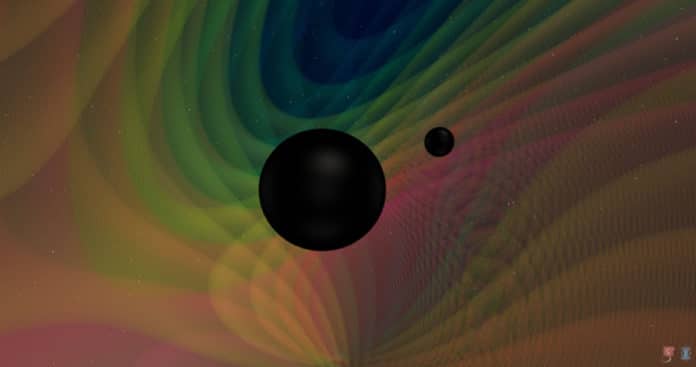In a first, a group of space experts has identified gravitational waves emerging from the merger of two Binary Black Holes (BBH) with significantly unequal masses.
GW190412 is the first observation of a binary black hole merger where the two black holes have distinctly different masses of around eight and 30 times that of our Sun. This is the first binary black-hole system observed that have a significant difference between the masses. This big mass difference means astronomers can accurately measure several properties of the system, such as its distance to us, the angle we look at it, and how fast the heavy black hole spins around its axis.
GW190412 was first observed by both LIGO detector and the Virgo finder on the 12th of April 2019, early during the detector’s third observation run O3. Examinations uncover that the merger occurred at a distance of 1.9 to 2.9 billion light-years from Earth.
The new unequal mass system is a unique discovery since all binaries observed previously by the LIGO and Virgo detectors consisted of two roughly similar masses.
Frank Ohme, leader of the Independent Max Planck Research Group, said, “For the very first time we have ‘heard’ in GW190412 the unmistakable gravitational-wave hum of a higher harmonic, similar to overtones of musical instruments.”

“In systems with unequal masses like GW190412 – our first observation of this type – these overtones in the gravitational-wave signal are much louder than in our general observations. This is why we couldn’t hear them before, but in GW190412, we finally can.”
“This observation once again confirms Einstein’s theory of general relativity, which predicts the existence of these higher harmonics, i.e., gravitational waves at two or three times the fundamental frequency observed so far.”
Alessandra Buonanno, director of the “Astrophysical and Cosmological Relativity” division at the AEI in Potsdam and College Park professor at the University of Maryland said, “Thanks to the improved sensitivity, GW190412 has begun to reveal us a more diverse, submerged population, characterized by mass asymmetry as large as four and black holes spinning at about 40% the maximum possible value allowed by general relativity.”
Scientists also took a gander at deviations of the signals from what Einstein’s general theory of relativity predicts. Even though the signal has properties unlike all others found so far, scientists did not found any essential departure from the general-relativistic predictions.
Journal Reference:
- GW190412: Observation of a Binary-Black-Hole Coalescence with Asymmetric Masses. arXiv:2004.08342
